What Fertiliser do I Need for my Lawn?
September 1st, 2023 | Categories
A lush green, weed-free, healthy lawn is the perfect foil to lovely colourful flowers, shrubs, and trees in our gardens. However, it can be a bit of a battle at times getting it right. Just when you think you have, a dead patch can appear, or the general look of the lawn isn’t as green as you would like, or several weeds may just spring up in a new area. There can be several reasons for these. One thing you can do to ensure a healthy lawn for the long-term is to feed it with the right kind of fertiliser.
Giving your lawn a good feed with the right fertiliser at the right time of year will ensure the grass is as healthy as possible for years to come, and can stand up to a beating of weather extremes such as drought and heavy rain, or an actual beating if you have kids and pets. It can also mean more grass grows well enough to suppress a lot of weeds on its own.
But what kind of fertiliser should you use, and when? Our handy guide seeks to answer all your questions so your lawn is the best it can be.
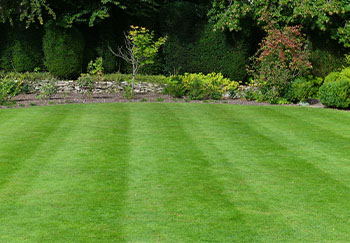
How Often Should You Fertilise the Lawn?
We recommend fertilising lawns twice per year. In the spring, then in the autumn. Why not just once in any month you might wonder? Well, grass has different nutritional needs at different times of year. In spring, grass needs more nutrients for growth, and in autumn it needs more nutrients for disease and frost resistance. Feeding the lawn the right mix at the right time gives it a shorter term boost and sets it up for long-term health.
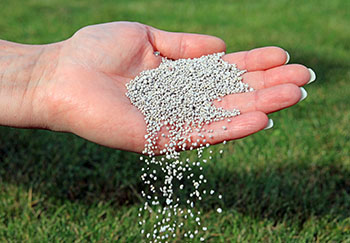
Best Weather Conditions to Fertilise the Lawn
The best weather conditions to fertilise any lawn are cooler, cloudier days. It’s even better if rain is forecast later in the day or in the days to come. This is because rainwater will help to begin the feeding process by breaking down and spreading the fertiliser which is then absorbed by the lawn. If there’s no rain forecast, you can water the lawn yourself gathered in a water butt or from a hose or sprinkler.
Avoid fertilising the lawn on very sunny and hot days; the heat can cause the feed to scorch the grass blades, leaving burnt patches.
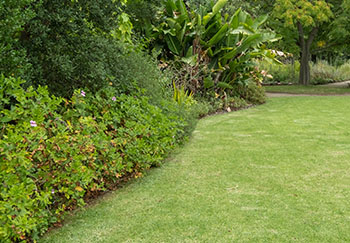
What Kind of Fertilisers should I Use?
Lawn fertiliser typically comes in two forms: granular and liquid concentrate.
Granular fertilisers typically break down more slowly in comparison and give a feed over several weeks. Liquid concentrate fertilisers act faster, giving the grass a short-term boost of nutrients. This is good if the grass needs a fast pick-me-up. There may be a need to do liquid fertiliser twice in the spring, and twice in the autumn, due to the fast-working nature of the product. If your lawn is quite healthy already, and you like a put down and forget for a while approach, opt for granular. Additionally, whether granular or liquid, you will recall we mentioned lawns requiring different nutrients depending on the time of year. You might see the term “NPK” on lawn feed products (they are on many other fertiliser products too such as plant feed), which stands for nitrogen, phosphorus, and potassium. This relates to the mix of nutrients, but don’t worry about having to check these, as the products will be labelled something like “spring/summer” or “autumn” too, so you know what fertiliser to use and when.
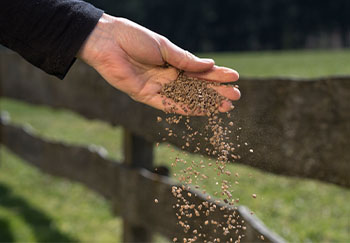
How to Apply the Fertiliser
If using a granular fertiliser, while it can be done by hand, the best and easiest way to spread it around is to use a spreader. These can be pushed along on different settings depending on the product to allow the granules to fall onto the lawn evenly. With the liquid, you can dilute to the specified volume and apply using a handheld sprayer easily enough.
Note – if you overapply fertiliser of any kind you will scorch your lawn.
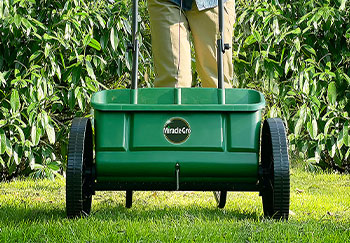
Other Secrets to a Green Lawn
There are some other things you can do to help ensure your lawn looks as healthy as possible in addition to feeding:
- Don’t “scalp” the lawn with each mow. This refers to having the blades too low, which is bad for the grass. Try cutting on the highest setting.
- Good watering. Rainwater is best but in times of drought regularly watering the lawn with the hose or a sprinkler will help.
- Moss and weed treatments. A good healthy lawn will get fewer weeds and moss build up, but if you have a lot of both, a specific treatment may be necessary before you get to fertilising as above.
- Scarifying and overseeding. This can help to break up and remove any moss and weeds (best to be done after applying a moss/weed treatment) to allow the grass to grow again more freely. Once raked and disposed of, applying a good amount of grass seed and watering in will add more grass to your already established lawn.
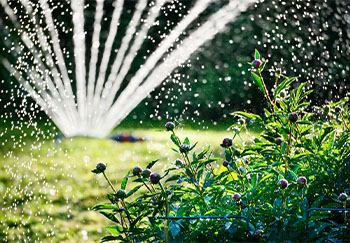
Top Tips for a Lush Green Lawn
Following these tips will – with a little effort each year – see your lawn last a lifetime, avoiding expensive re-turfing, even if it’s in a well-used family garden.
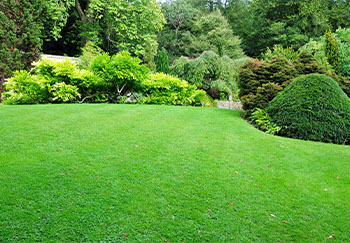
Links to Other Lawn Care Guides
squiresgardencentres.co.uk/garden_advice/spring-lawn-care/
squiresgardencentres.co.uk/garden_advice/summer-lawn-care/
squiresgardencentres.co.uk/garden_advice/autumn-lawn-care/
squiresgardencentres.co.uk/garden_advice/winter-lawn-care/
squiresgardencentres.co.uk/garden_advice/lawn-care-calendar/
squiresgardencentres.co.uk/garden_advice/top-tools-for-lawn-care-and-maintenance/






